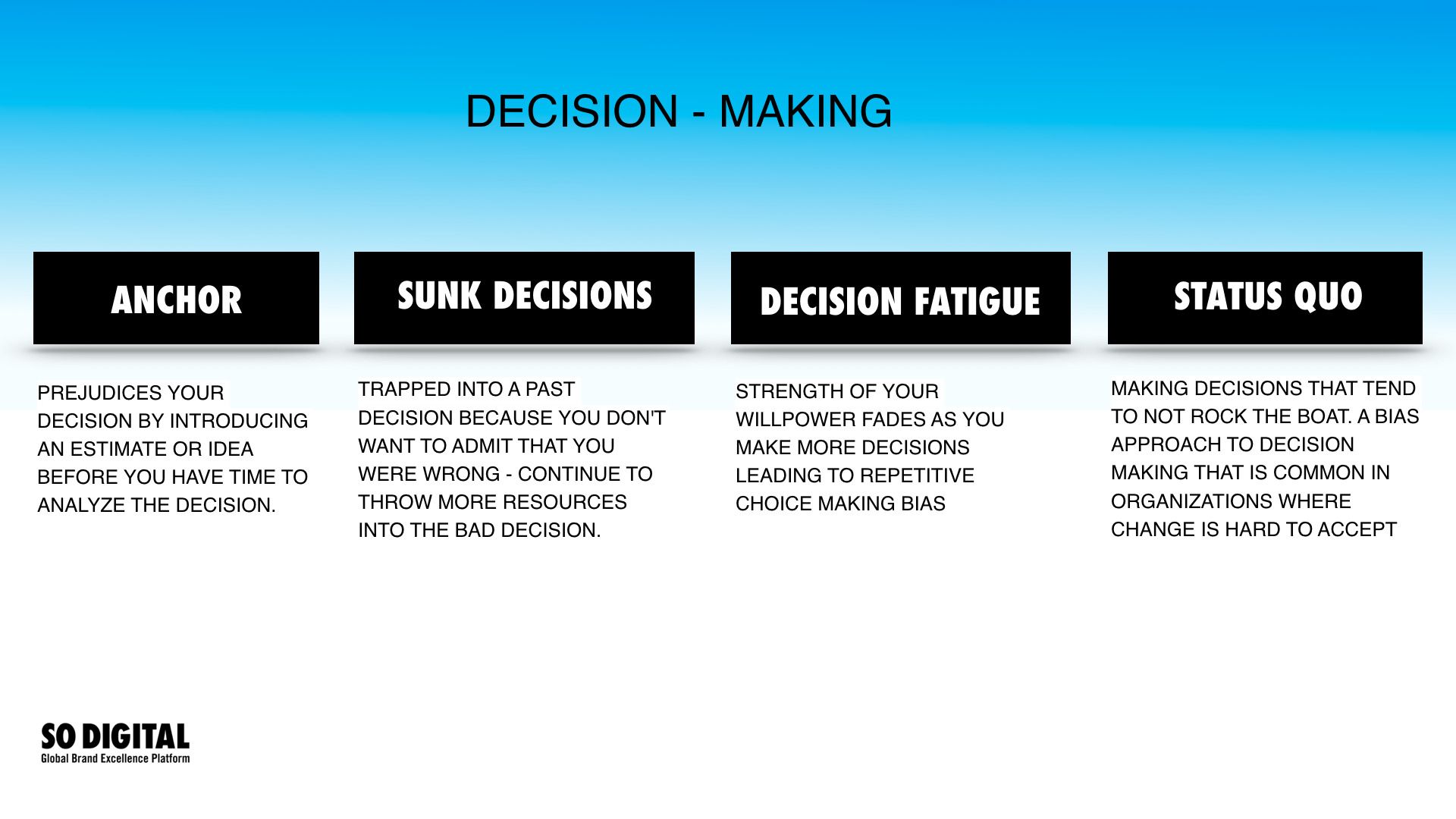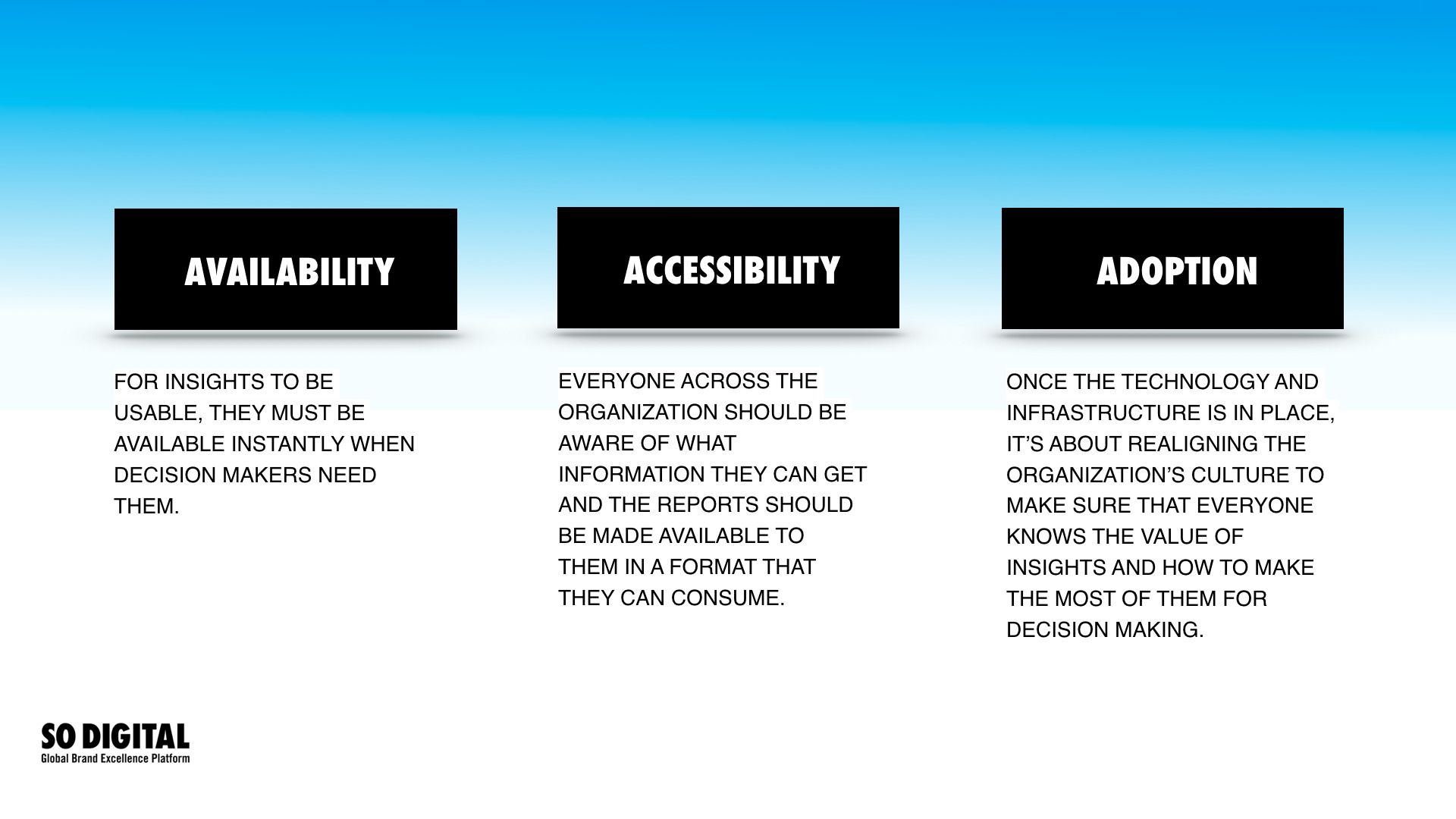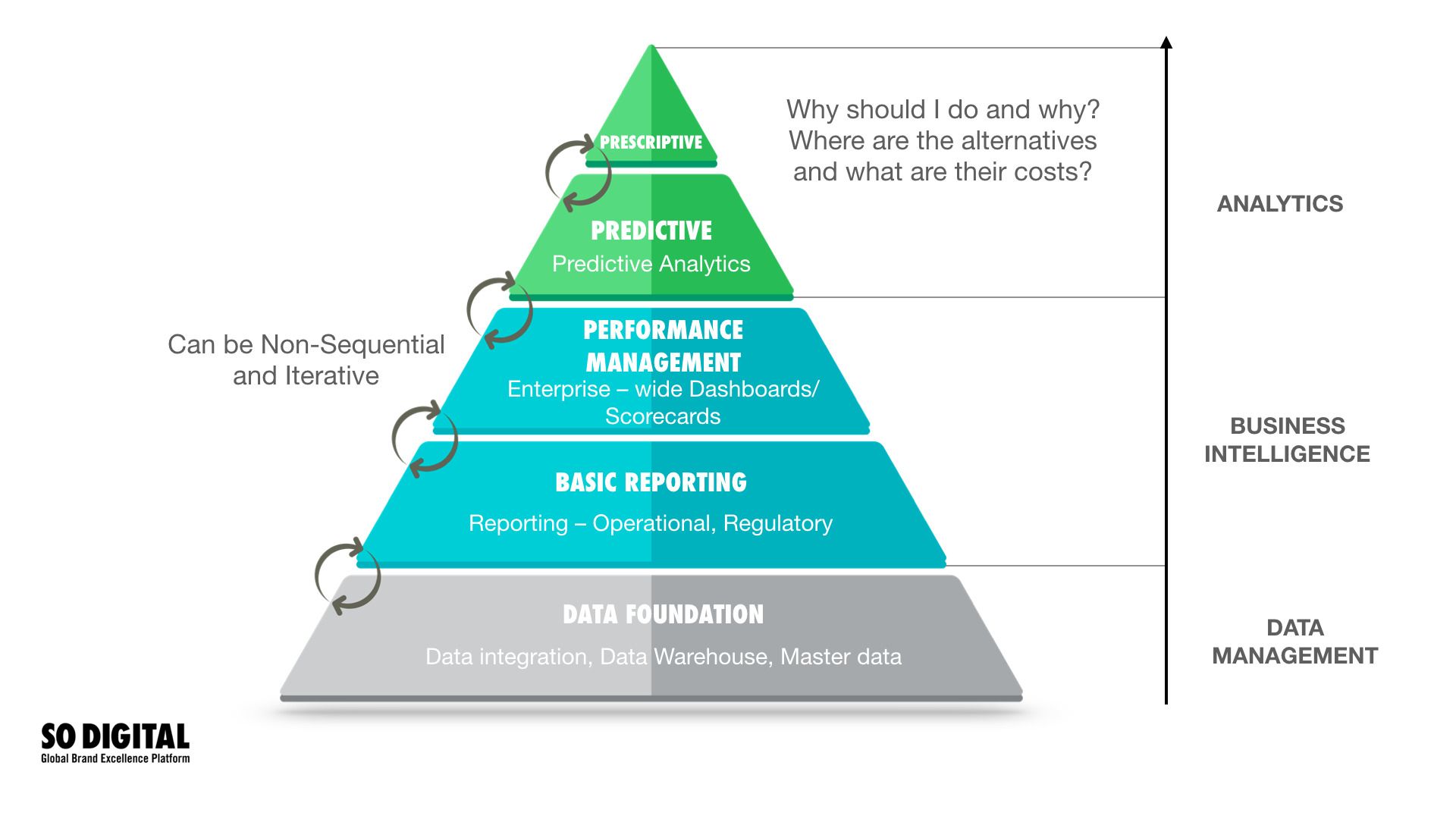We help brands drive internal capability, operational and executional improvements to achieve excellence in brand, creative and e-commerce strategy execution. Providing services and solutions across strategy management, internal enablement, capability building and executional support provision.
Flagship clients
 (EMEA) 14 markets
(EMEA) 14 markets
 (EMEA) 47 markets
(EMEA) 47 markets
 (EMEA) 17 markets
(EMEA) 17 markets
 (WHQ)
(WHQ)
Concept of the Value of Data
"The world’s most valuable resource is no longer oil, but data" captures of the essence of media headlines from more than respected publications such as The Economist, New York Times, Wired and many others published in 2018. Without going into merits of individual articles argumentations, and especially whether analogy is completely correct, it does point to a shift toward a greater general public understanding of the value of data. This understanding was previously reserved only to high-tech companies, data startups, consultants and certain technology infused functions of large(r) corporation. Using data to power innovative technologies or services or even simply to fuel better outcomes of existing functions, still however remains elusive to most corporate functions and their everyday operations. One such corporate function is a brand creative function in global organisations, especially those who follow global brand as a marketing strategy. In a current organisational set-up where majority of brand creative operations are done through email chains data is lost and unrecorded in a systematic way and brand creative decisions are made based on gut feelings, personal experience and individual tastes.
Brand creative decisions are made based on gut feelings and personal experience.
Pitfalls of Gut Feeling and Personal Experience Decision Making
Making decisions is the most important job of any executive. It’s also the toughest and the riskiest. Bad decisions can damage a business and a career, sometimes irreparably. The way the human brain works can sabotage our decisions. Every brand manager takes hundreds and hundreds of decisions subconsciously or consciously - making decisions the key component of the manager role. Decisions play an important role as they determine both organisational and managerial activities - making them an integral part of modern management. Decision making is the process of choosing a specific course of action from various alternatives to solve the organisational problems or difficulties. Decision-making is the selection, based on some criteria from two or more possible alternatives. Any decision made in a company is important, no matter how small it may be.
The way the human brain works can sabotage our decisions.
The road of decision-making is filled with numerous pitfalls and traps. These pitfalls are hard to discern since they are part of our normal decision making process. They include misconceptions in the decisions we make, a bias in favor of one option, falling prey to the status quo, and continuance with sunk decisions. The more complex the decision, the more likely you'll run into these pitfalls.
Anchors prejudice your decision by introducing an estimate or idea before you have time to analyse the decision. For example, suppose you and I need to negotiate billing rates for our technology platforms, digital branding production and consulting services. If you reviewed our web site, you clearly saw what our billing rates were. This information would force or anchor you to seek rates that are close to what you already know. Anchors influence your decision by leaving an impression. They are hard to avoid. You can reduce the influence of anchors by not exposing yourself to information that influences your decision until you've had time to think on your own. Sunk decisions are another common pitfall. Here you are trapped into a past decision because you don't want to admit that you were wrong. So you continue to throw more resources into the bad decision. Technology type projects often lend themselves to sunk cost decision making. To avoid sunk decisions, reach out for an advice from people who are not involved in the project and recognise that failure is a normal part of decision making. There is the status quo bias in decision making where you make decisions that tend to not rock the boat or maintaining one's current or previous decisions. This bias approach to decision making is common in organisations where change is hard to accept - and large organisations and their cultures are very often like that. Decision fatigue refers to the deteriorating quality of decisions made by an individual after a long session of decision making. As we make more decisions throughout a given period, our decisions change. Usually these changes are for the worse, or at least less rational. Decision fatigue has three primary effects. One is a reduced ability to make trade-offs; if two options have positive and negative attributes, it will be difficult to estimate which attributes are stronger. Another is decision avoidance; we will opt for the default even more often. Finally, there is reduced willpower, resulting in choices that will have negative long-term outcome
On average, organisations only use 50% of all available information for decision-making.
However, despite the importance of decisions and decision making and well recognized and documented biases , majority of companies still base at least half of their regular business decisions on “gut feeling” or experience rather than being driven by data and information. Moreover, on average, organisations only use 50% of all available information for decision-making. For non-process driven functions like brand function and especially those in large organisations which span multiple continents and act as remote teams implementing global branding, while lacking a centralised technology platform for execution, this number is is even higher. It would be safe to say, that majority of branding decision in such context are based on personal experience and gut feeling rather than data and information.
The most commonly cited reason for not using information as the basis for decision-making is that the necessary information was not available.
Data-Driven or Fact-Based Global Brand Creative Execution
While successful managers demonstrate the ability to leverage experience, intuition, and even emotion, these “skills” are often at odds with the ideal basis for making decisions — the facts.
Data is the raw and unprocessed facts that are usually in the form of numbers and text. Data can be quantitative (measured) or qualitative (observed). Data primarily exists in computer-friendly formats and mostly lives in databases and spreadsheets. Information is prepared data that has been processed, aggregated and organised into a more human-friendly format that provides more context. Information is often delivered in the form of data visualisations, reports and dashboards. Insights are generated by analysing information and drawing conclusions. Both data and information set the stage for the discovery of insights that can then influence decisions and drive change.
From the business point of view, data is valuable only if it can provide the right insights at the right time to help the decision making process.
From the business point of view, data is valuable only if it can provide the right insights at the right time to help the decision making process. Data-driven decision management (DDDM) is an approach to business governance that values decisions that can be backed up with verifiable data. Data-driven decision management is usually undertaken as a way to gain a competitive advantage. Equipped with the right tools and technology, data can be used to see exactly what’s happening within an organisation as well as in the marketplace. This information can then be used to make agile decisions. In the future, businesses that put data to work to make decisions will lead the way as it will help them gain strategic advantage over their rivals, explore hidden opportunities, identify problems beforehand, and reduce costs by managing their processes better.
Explore hidden opportunities, identify problems beforehand, and reduce costs by managing processes better.
Being “data-aware” is the first step - data is available at the organisation, but its value is not fully unlocked. Insights empower business users with specific answers to questions that were previously guesswork. As a result, decision makers do not need to speculate on their next move, instead they can base it on real, quantifiable data. This not only improves business outcomes, but also pushes business users to think about their business in new ways.
Being “data-aware” is the first step - data is available at the organisation, but its value is not fully unlocked.

The transition from being data-aware to insights-driven comes by putting together a framework or process where it is easy to sift through large amounts of data for making intelligent decisions. A true insights-driven organisation enables all users, even those without a technical background, to analyse and gain insights from data without needing support from IT or the analytics department to produce the reports they need. Actionable insights are "The Missing Link" between data and business value. In order to get returns on their investments, data-aware organisations need to move towards being insights-driven. To ensure that the journey is smooth, they should to follow the three A's – Availability, Accessibility and Adoption.
The transition from being data-aware to insights-driven comes by putting together a framework or process where it is easy to sift through large amounts of data for making intelligent decisions.
To discern between the benefits and possibilities, best way to approach the data-driven business decision making to discern between process data and output data. Process data refers from data points which inform or describe how something was achieved or how something was done. So, lets say how fast did an organisation roll-out a global branding campaign, how many people participated in the process or execution, how did process steps take place, where there any problems in the process itself, what was planned vs. what was achieved etc. Insights based on the process data would point the organisational function into costly mistakes, late deliveries, overproduction or underproduction of certain assets, duplications in activities and so forth. It would inform both participants of the process across organisational levels about possible time, money, and opportunity costs that arise simply because the way the executional steps are being performed at the moment. Process data would tell you what exactly is happening within the brand creative / branding execution. If it isn't measured it can't be improved! On the other hand, Insights based on the output data would point to the quality or quantity of the intended process output. It would inform or describe what was done. What did it look like in numerical or qualitative terms. Output data could also be compared with intended plans, for example in number of positions that were planned to be branded, and positions that were actually branded, and of course introduce the intended timing, duration etc. These insights would inform decision making whether something should be changed - either in the process, the way something was done to achieve a different output. Or whether the output itself was satisfactory, especially if it's coupled with other data sources such as performance (marketing).
These metrics would be an example of data driven decision making on the level of business intelligence. With data-driven approach applied to global brand execution a new world of opportunities would open, even within first steps undertaken.
However, at most-if-not-all global organisations, global branding execution, especially in the global-to-local context or centralised brand management, execution is still very far from being data driven, particularly process data driven.
'Gut Feeling' & Personal Experience Decision Making in Global Creative Execution and Global Branding
Branding operations in global organisations that implement global brand as a marketing strategy are an example of a global value chain - geographically dispersed corporate value adding process. As it is based on a single global creative that needs to be replicated across markets, global brand campaign execution is a geographically dispersed organisational activity whose success requires brilliant implementation of materials conforming to established brand guidelines. Global branding campaign execution as a highly complex organisational endeavour which brings together countries, vendors and partners working as virtual teams that span both geographical and time zones in intense time sensitive coordination and communication tasks and interactions.
Without a centralised system which would treat global branding execution as a business process, data is lost, and trapped in individual inboxes or at best on organisational levels (such as EMEA or a single country).
Unfortunately, as majority of branding operations are done through email chains data is lost and unrecorded in a systematic way and branding decisions are made based on gut feelings and personal experience. Without a centralised system which would treat global branding execution as a business process, data is lost, and trapped in individual inboxes or at best on organisational levels (such as EMEA or a single country). Given that global branding isn't executed through a single platform, and consequently not organised as a business process with a specified input and output, process data isn't effectively recorded at all. Thus preventing and possible insight deduction or organisational learning. Brand development, brand management and branding execution exists only in the form of heuristics - tacit knowledge of selected individuals. Branding professionals, without centralised process data sources or centralised output data sources are actually forced to make decisions based on their 'gut' and personal experience.
Branding professionals, without centralised process data sources or centralised output data sources are actually forced to make decisions based on their 'gut' and personal experience.

Same can be said for global in-house brand creative teams, as they very rarely if at all have organised insights or reports into quality or quantity of creative implementation (output data) which is systematically compared with brand creative guidelines (input data) which were provided to local country teams or other organisational units. Located at global or regional headquarters the mission of brand creative in-house teams is to consolidate creative operations into a single creative centre of excellence that supports & guides local business units (countries) in brand creative campaign implementation.
Majority of in-house brand creative teams are organisationally disabled to systematically and scalable drive creative excellence
In-house global brand creative teams need to drive creative excellence—strongly influence corporate and product-level creative strategy, design thinking, and overall excellence in creative execution across the company. One of their corporate roles is also brand excellence—strongly influences corporate and product-level brand strategy and government of adherence to design and voice guidelines. So it is up to global brand creative in-house team to ensure creative and brand excellence in global execution, to guide and govern brand and creative excellence while providing support to local markets and business units. However, despite their corporate roles, majority of in-house brand creative teams are organisationally disabled to systematically and in a scalable way drive creative and brand excellence.
The creative concepts creation is at most organisations done without a systematised and collectively processed market level performance data
Furthermore, the creative concepts creation is at most organisations done without a systematised and collectively processed market level performance data. The feedback loop in terms of performance of individual creative works is aggregately unavailable as it is either trapped in individual centrally run digital marketing outlets and providers platforms (eg. Instagram, Facebook, Google) or worse, scattered around the countries in case of a local media buying & digital marketing. In-house brand creative team does get some feedback, but it is disconnected, disorganised and definitely not collected, systematised nor processed with creative concept creation in mid. Most of the time in-house creative teams might get their hands of media buying reports, and from those try to interpret or infer insights that would guide their decision-making on brand creative concept creation and production. While those might be useful to deduce some part of the information, they definitely don't provide the whole picture and thus their usability is very limited. As a result most of the time the concepts are created following either established - historical internal norms or general market trends with combination of leading creative individual's personal experience and guidance.

Obviously this approach while certainly plausible it is far from ideal. The road to data driven brand creative execution and brand creative creation isn't simple but it isn't impossible either. It starts with acknowledgment of the current situation, future vision and acknowledgment of the general value of data by both creative and business management.
The prerequisite to data driven brand creative execution and concept creation starts with implementation of technology system that will enable the collection of required data points and as well, within data analytics designated modules enable inflow from multiple data sources.
Data Driven Global Branding through Global Brand Content & Operations Excellence Platforms
SO DIGITAL provides global brands with both technology solutions and scalable talent resources that help global brands and their headquarters achieve economies of scale and scope and reduce organisational complexity costs in global branding. Our solutions create organisational simplicity and deliver speed & efficiency in execution across markets by standardising and codifying branding operations. We establish clear roles and responsibilities and translate it to platform interface in shape of user levels. We secure process implementation by defining chain of actions with defined goals to be completed by each user level within a predefined time frames and other user action dependencies. Our platforms, once implemented, provide structural foundation for process and output data collection that can kick-start the journey towards data-driven brand creative execution and concept creation.
SO DIGITAL GLOBAL BRAND CONTENT EXCELLENCE PLATFORM helps in-house brand creative teams of global brands effectively mange the relationship with local business units in terms of creative brand direction, campaign content demand streams, local adaptation request and worldwide learning.
- Aesthetics & Visibility
Campaign project details, brand content and brand creative implementation guidelines are merged together and made available within aesthetically pleasing and highly functional design context that enables quick access and visibility of available materials for download and implementation locally.
- Market Visibility & Country Content Systematisation
Our solution leverages technology to systematise and simplify market-by-market visibility and availability of brand approved campaign directives and brand content while providing scalable digital production support resources of principal partnership agency for tier 2, tier 3 content design execution and/or adaptation requests by markets / stakeholders.
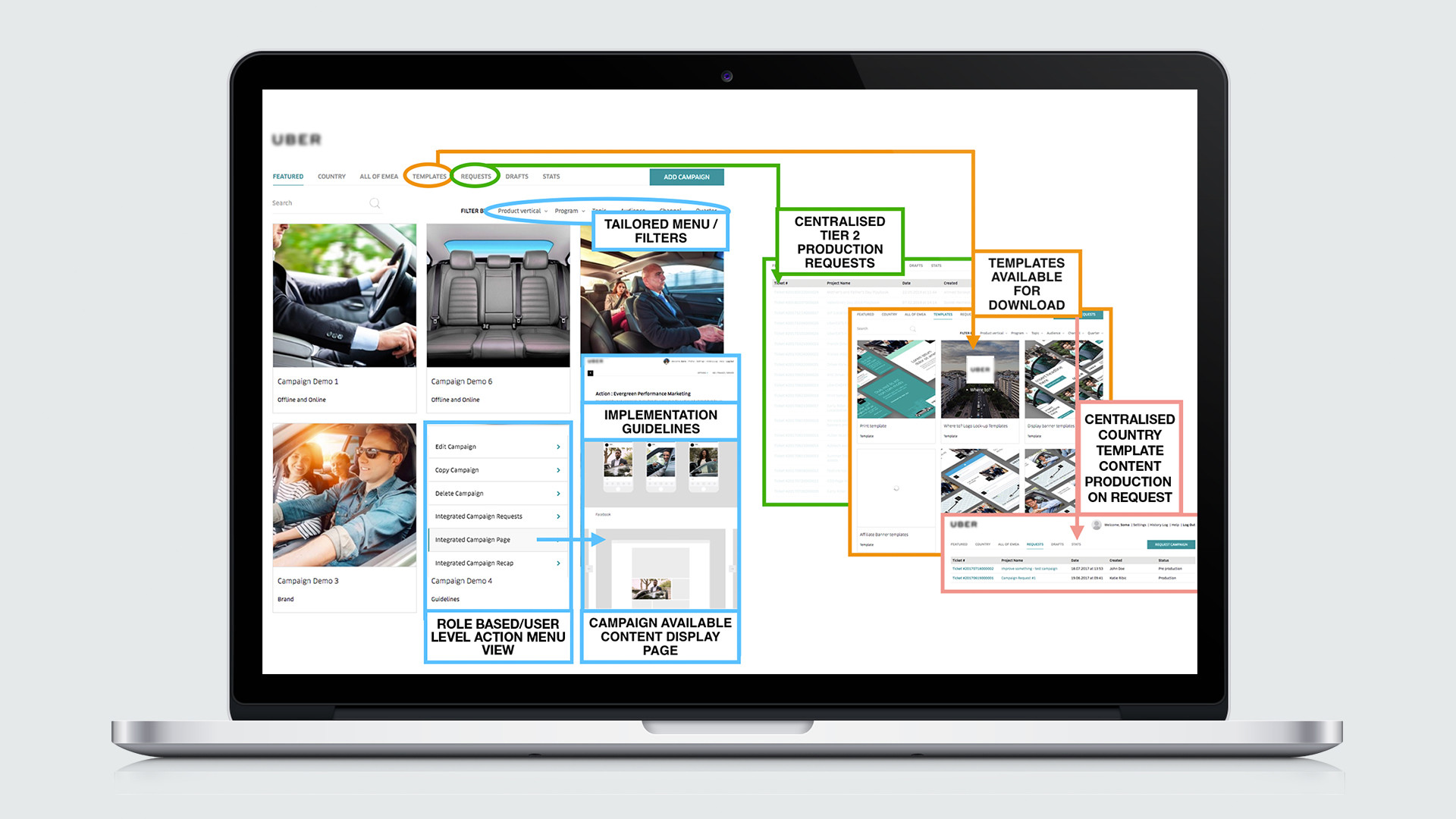
- Creative Direction & Campaign Launch Details
Campaign project details, brand content and brand creative implementation guidelines are merged together and made available within aesthetically pleasing and highly functional design context that enables quick access and visibility of available materials by countries and remote marketeer teams for download and implementation locally.
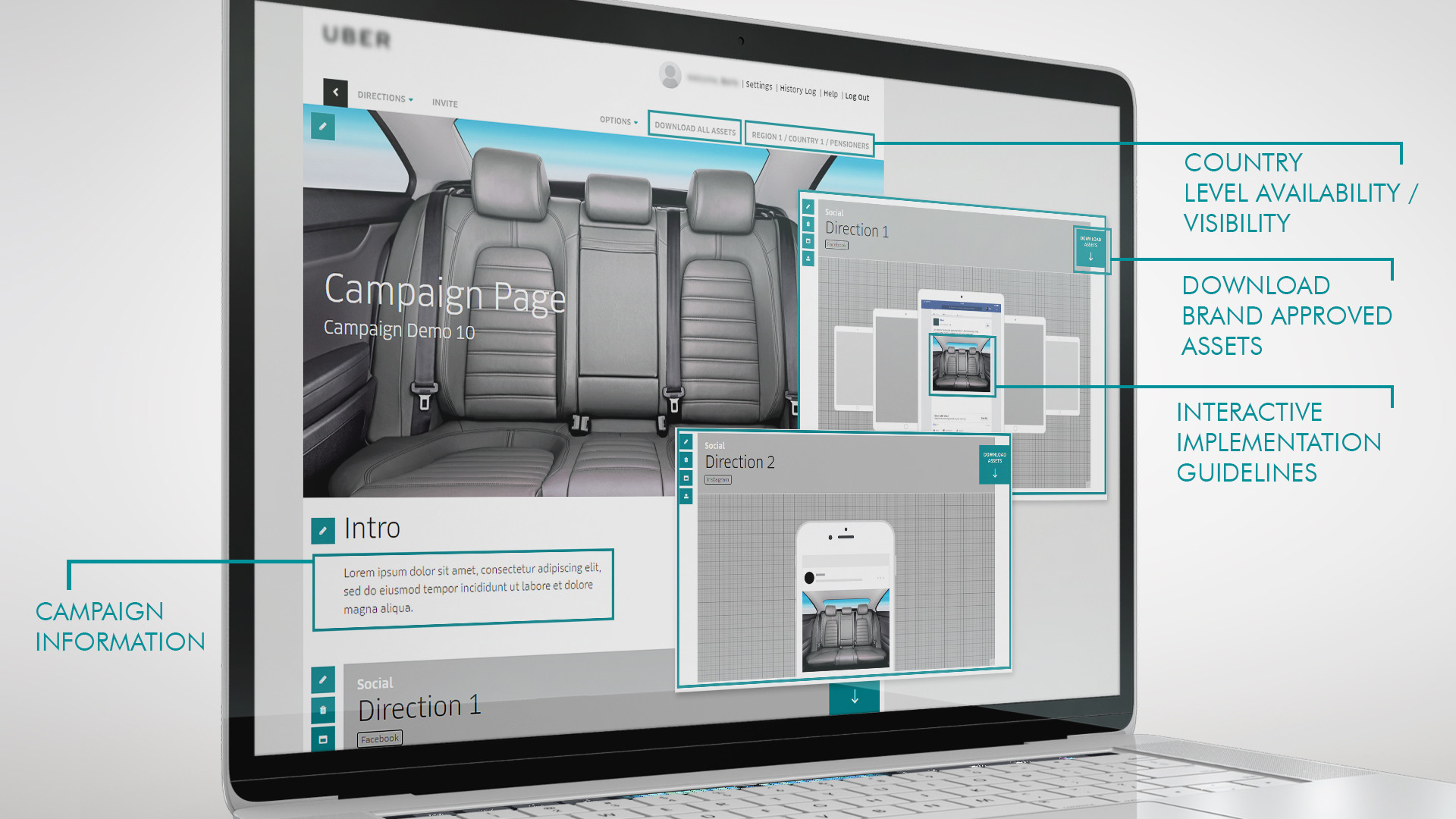
- Country - by - Country Access / View to Content
Country / user level specific view to the platform content ensures content access speed & relevance while having campaign creative guidelines sortable and visually presentable per multiple editable criteria cuts target campaign search time.
- Campaign & Campaign Directives Management
Unlike DAM solutions whose structural logic stems from individual asset / file management, SO DIGITAL BRAND CONTENT EXCELLENCE usage architecture resides on campaigns and campaign directives management, within which individual assets are made available for download. Management of campaign directives & campaigns and not assets.
- Digitisation of Workflows between InHouse Creative Team and Principal Partnership Agency
Functional operations with client/stakeholders and principal partner agency are completely digitised and translated to platform interface which enables data driven learning and continuous improvement of creative operations.
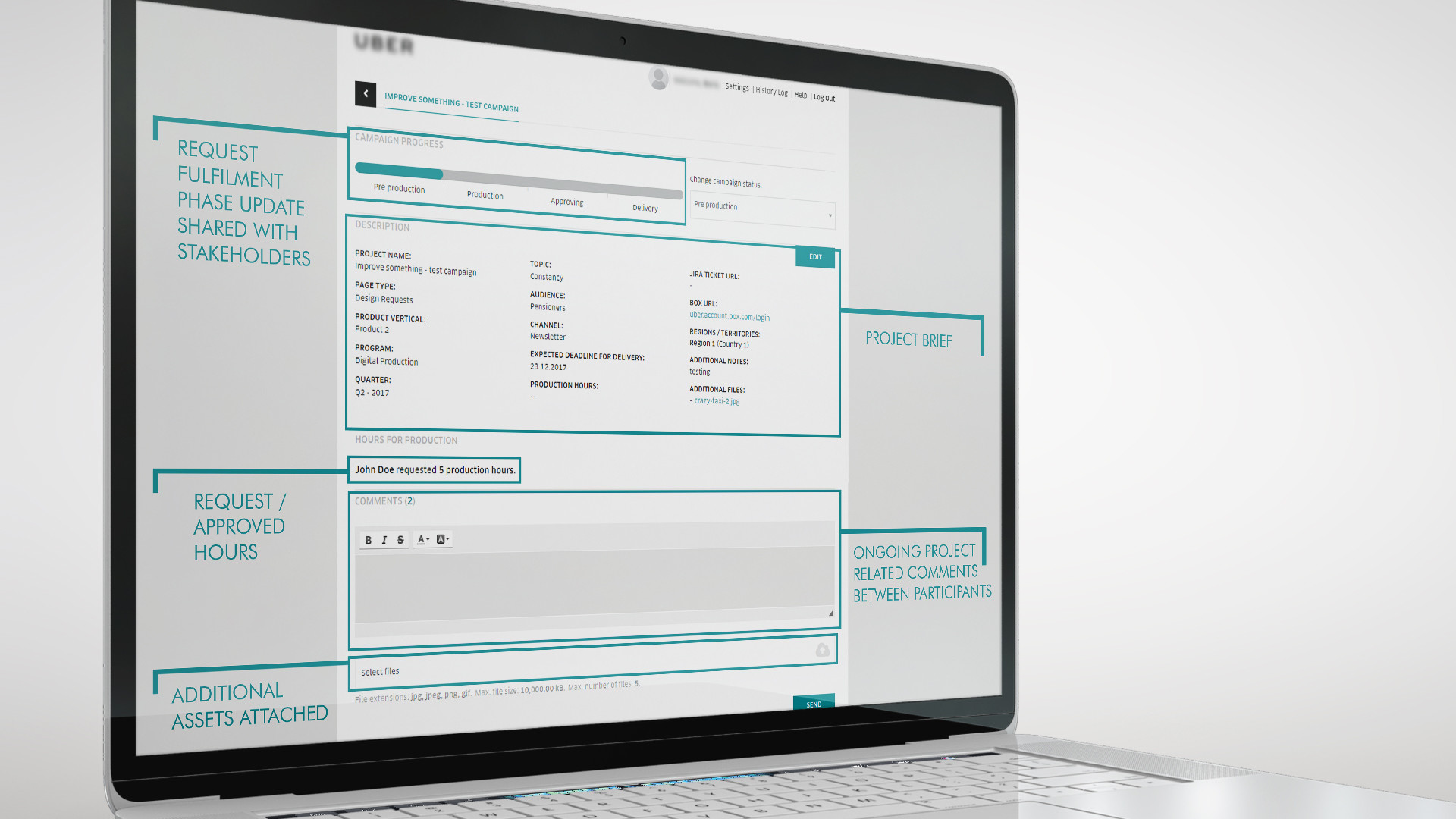
- Both Supply & Demand Digital Structure = Creative Operations Scalability
As platform introduces structure both on the content supply side and content demand side, creative in house teams are relieved from repetitive communication and operational project administration tasks can provide scalable creative brand excellence support as a foundation for brand growth.
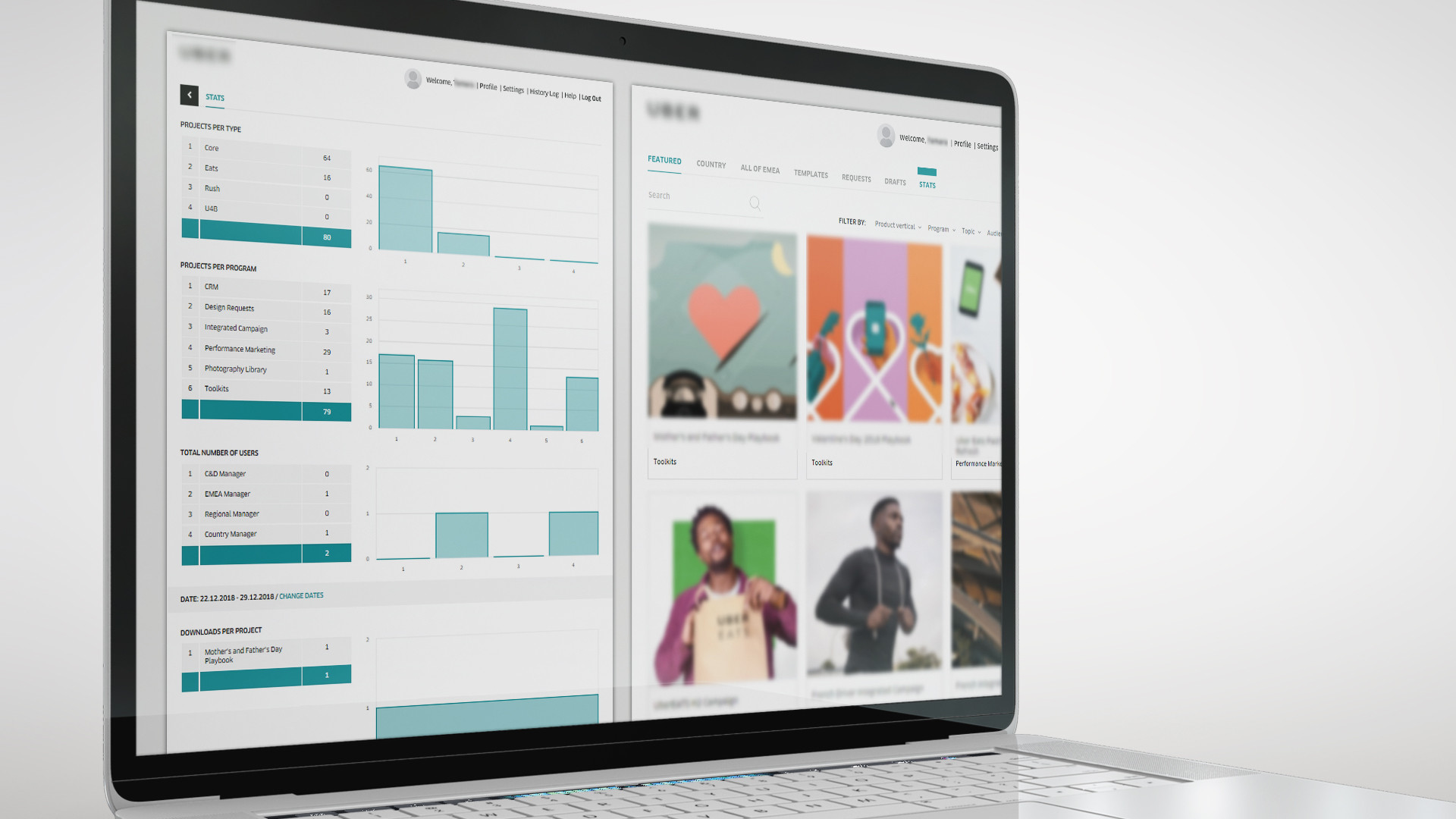
- Brand Content & Creative Directive Analytics
As content supply and demand is digitised within the platforms, access, requests, distribution and usage, platform offers abilities to embark on data analytics journey.
Contact us today for a no-commitment walk through of SO DIGITAL platform solutions implemented for clients like Nike EMEA and Uber EMEA.
-------------------------------------------------------------------------------------------------------------
References :
The Economist - "The world’s most valuable resource is no longer oil, but data" https://www.economist.com/leaders/2017/05/06/the-worlds-most-valuable-resource-is-no-longer-oil-but-data
B. Ziegler, "Designed for Waste : Global Brand Campaign Execution Architecture" https://www.linkedin.com/pulse/designed-waste-global-brand-campaign-execution-boris-ziegler/
B. Ziegler "(In)visible Millions : Complexity Cost of Global Branding Execution" https://www.linkedin.com/pulse/invisible-millions-complexity-cost-global-branding-boris-ziegler/
The Decision Lab, "Decision Fatigue" https://thedecisionlab.com/bias/decision-fatigue/
Margaret Rouse " What is data analytics (DA)? - Definition from WhatIs.com" https://searchdatamanagement.techtarget.com/definition/data-analytics
Brent Dykes , Forbes.com : "Actionable Insights: The Missing Link Between Data And Business Value" https://www.forbes.com/sites/brentdykes/2016/04/26/actionable-insights-the-missing-link-between-data-and-business-value/#1994328451e5
